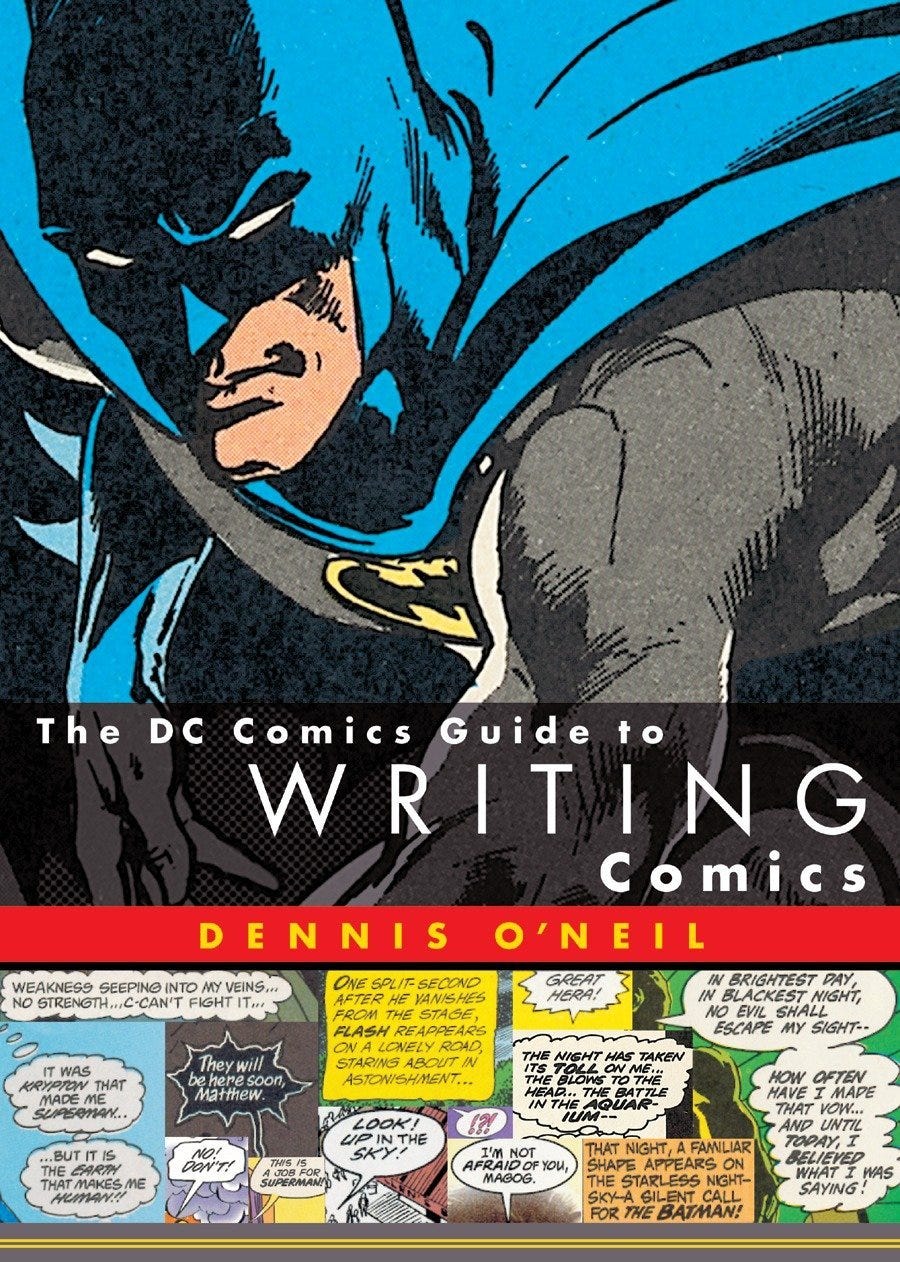There are many good books out there on how to write comics, and most are still currently available.
Continuing with a few helpful bits about writing comics, this is a handout I gave to a room full of students (long ago). They were all new writers and needed to know the most basic rules of comic writing, as opposed to other forms of fiction writing.
Bill Willingham’s helpful tips for new comic writers
A few basic terms of the trade:
1) A single panel that takes up a single page is called a full-page splash.
2) A single panel that takes up two pages connected together is called a double page spread.
3) A bit of dialogue assigned to a character is called a word balloon (not a word bubble – no, I don’t particularly care if you say “bubble” rather than “balloon” but there are some old guard comics pros that will still get pretty cranky if you do).
4) A bit of thought assigned to a character is called a thought balloon (not a thought bubble – even though, admit it, thought balloons look more like a cluster of bubbles than a single balloon).
5) Narrative bits that are not a particular character’s dialogue are called captions.
6) The (usually) white spaces between panels are called gutters.
Some helpful rules to stick to, until you’re experienced enough to know when you can break them:
Five panels a page are the max limit, and often fewer.
No more than one action per panel. An action and its results are two actions and need at least two panels.
No more than one caption per panel, unless it is a larger than normal panel.
No more than two word balloons per panel, unless it is a larger than normal panel.
A single word balloon should never contain longer than two lines worth of dialogue, using Microsoft Word, at twelve-point type. Just like these two lines.
(If a bit of dialogue leaks even a little bit into a third line of typed script, then it will take too big of a word balloon to contain it. Break it into two word balloons.)
Shorter bits of dialogue are always better. Comics are terse. If you need to blather on, and can never get to the point, write novels.
A single extended scene in comics should also be as short as you can make it. A typical comic scene is only two to three pages long. Four is still okay, but by five pages it’s beginning to get a bit long. A six or more page single scene is way too long and should be avoided.
In a comic script you generally place the panel description first (which are instructions to the artist for what needs to appear in that panel), followed by Captions (if any), and lines of dialogue (if any).
Number any part of a page that is intended to be reproduced on the published page; meaning all captions or dialogue. This helps the artist know how much verbiage needs to have room left for it in any given panel, and lets the editor know how many spots for captions and dialogue she needs to find for that page.
Here is what a sample bit of comic book script might look like:
Page One (three panels)
Panel One
The cave man leaps down on Vandar from above. The cave man is wielding his club and Vandar is trying to pull his side arm.
1) Cap: Almost without warning…
2) Cave Man: Grrrooooot!
3) Vandar: What the hell?
Panel Two
Same scene. Now the two of them are locked in combat. A wild swing from the cave man knocks Vandar’s pistol out of his hands.
4) Cave Man: Waaaaahhhh!
5) Vandar: I can see this isn’t going to end well for at least one of us!
Panel Three
This isn’t really a panel. It’s the space you need to leave at the bottom of the page for this issue’s titles and credits.
6) Title (display lettering): The Clash of Cave City
7) Subtitle (display lettering): Part Three of Vandar in the Lost Land
8) Credits





Those rules of thumb are super helpful! :)